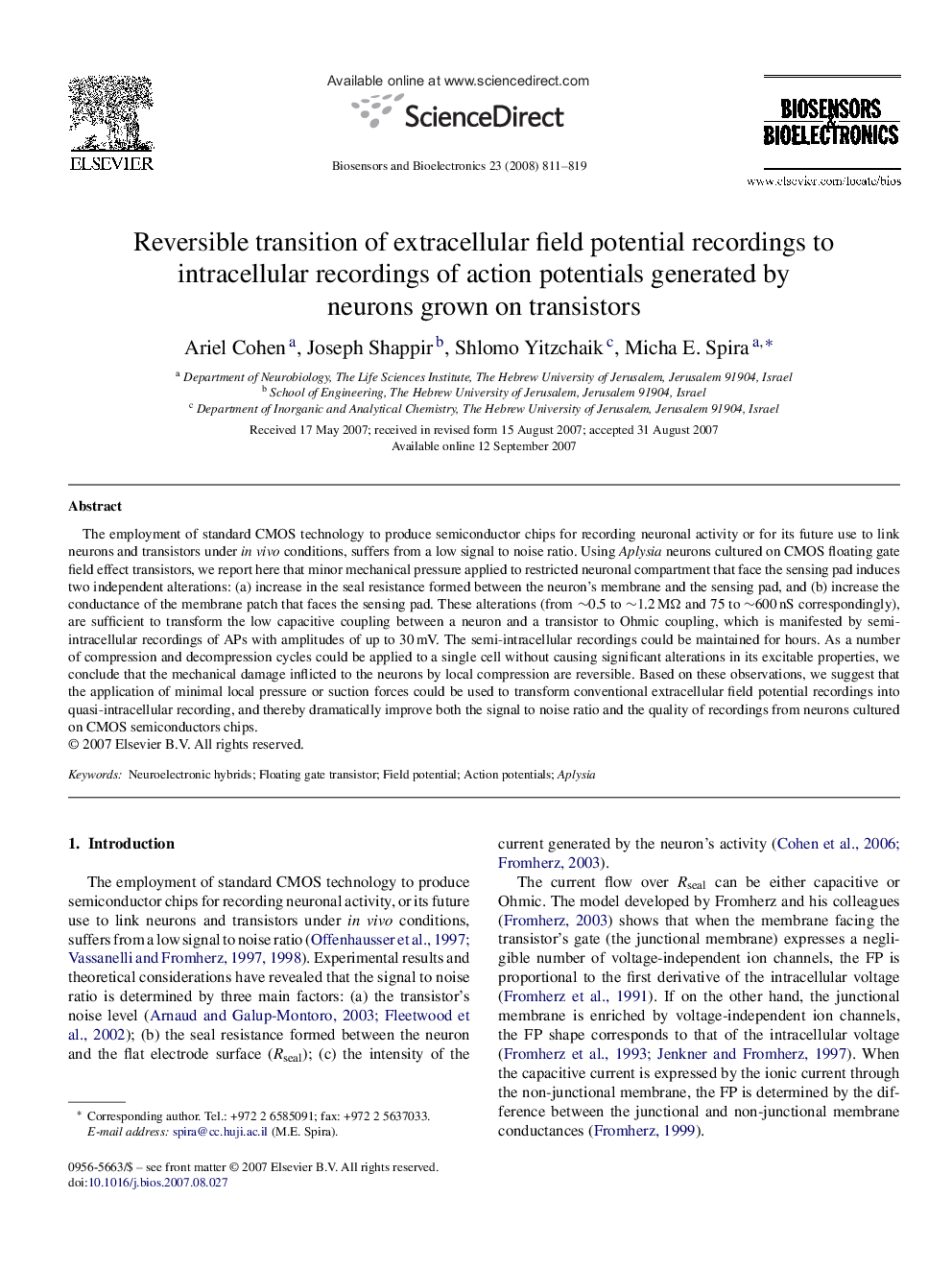| Article ID | Journal | Published Year | Pages | File Type |
|---|---|---|---|---|
| 868989 | Biosensors and Bioelectronics | 2008 | 9 Pages |
The employment of standard CMOS technology to produce semiconductor chips for recording neuronal activity or for its future use to link neurons and transistors under in vivo conditions, suffers from a low signal to noise ratio. Using Aplysia neurons cultured on CMOS floating gate field effect transistors, we report here that minor mechanical pressure applied to restricted neuronal compartment that face the sensing pad induces two independent alterations: (a) increase in the seal resistance formed between the neuron's membrane and the sensing pad, and (b) increase the conductance of the membrane patch that faces the sensing pad. These alterations (from ∼0.5 to ∼1.2 MΩ and 75 to ∼600 nS correspondingly), are sufficient to transform the low capacitive coupling between a neuron and a transistor to Ohmic coupling, which is manifested by semi-intracellular recordings of APs with amplitudes of up to 30 mV. The semi-intracellular recordings could be maintained for hours. As a number of compression and decompression cycles could be applied to a single cell without causing significant alterations in its excitable properties, we conclude that the mechanical damage inflicted to the neurons by local compression are reversible. Based on these observations, we suggest that the application of minimal local pressure or suction forces could be used to transform conventional extracellular field potential recordings into quasi-intracellular recording, and thereby dramatically improve both the signal to noise ratio and the quality of recordings from neurons cultured on CMOS semiconductors chips.
